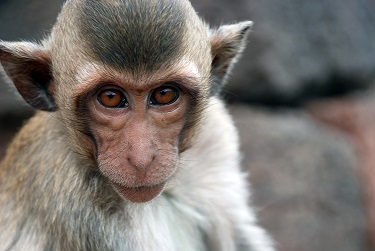Monkeys vs. Mice

Photo used via WikiMedia under the Creative Commons License https://en.wikipedia.org/wiki/Monkey
Researchers in China are now genetically engineering monkeys in order to have a type of autism. This is a great step in the research process because instead of using rodents, which are not very similar to humans, they can use monkeys, which allow them to collect more accurate information in the study of certain aspects of autism. In the past, monkeys have been used to study Huntington’s Disease. The reason why monkeys were used instead of rodents, which are typically used for scientific experiments, is to mimic this complex brain disorder better. Accordingly, the leader of the research in China is trying to find the fault in the brain circuits that cause behavior that is related to autism.
In order to start this experiment, scientists inserted a human gene, called MeCP2. When this gene was added, it consequently caused the monkeys to act as children that possess the gene in a human body. The behaviors that the monkeys displayed were repetitive movements, anxiety, and decreased social interaction. Furthermore, the monkeys were able to pass the gene onto their offspring, which allowed the scientists to study the disease more closely.
However, some scientists are not as thrilled as others, stating that they do not believe that the research is contributing much, since the monkeys are not severely developmentally delayed compared to actual humans that have the gene that produces autism. Another issue is that only the male monkeys had social interaction insufficiencies. Alysson Muotri, a human brain development researcher at the University of California–San Diego says, “As a model for autism, the monkeys aren’t perfect, but they could be better than mice designed to replicate the syndrome.”
The downside is that researchers have to genetically modify embryos with the MeCP2 gene, and then implant the embryos into surrogate monkeys. This is quite costly and will frankly create a threat to further research with the monkeys to make it more reliable. If the researchers improve their model and experiment, they will face the barrier of money that will be needed to produce the genetically modified monkeys.
Moreover, DNA problems are not the only thing that is said to cause autism. Things like environmental factors, including pesticides, could be another indication for the reason of autism. In the end, a monkey is not going to replace a mouse in experiments because mice are less expensive and reproduce more rapidly. Some things were learned from the study of the monkeys, but there are too many factors that can cause autism to base research on just this one type of trial, a fact which some researchers have also mentioned.

Hey, I'm a Senior at Air Academy High School and the Senior Photo Editor for The Jetstream Journal! I practically run all year long, doing cross country...












